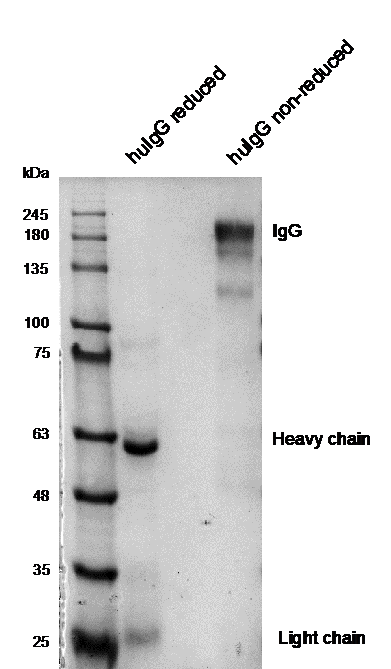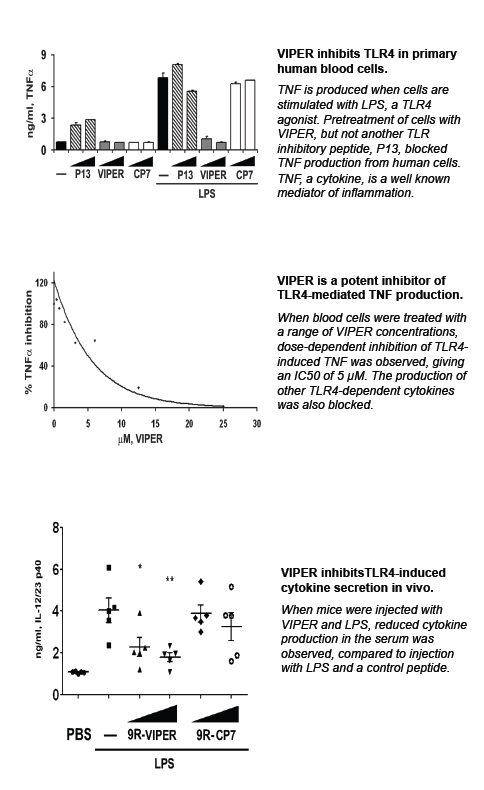
Cat. #160647
Anti-HIP1 [1B11]
Cat. #: 160647
Sub-type: Primary antibody
Unit size: 100 ug
Target: HIP1
Class: Monoclonal
Application: WB
Host: Mouse
£300.00
This fee is applicable only for non-profit organisations. If you are a for-profit organisation or a researcher working on commercially-sponsored academic research, you will need to contact our licensing team for a commercial use license.
Contributor
Inventor: Theodora Ross ; Dinesh Rao
Institute: University of Michigan
Tool Details
*FOR RESEARCH USE ONLY (for other uses, please contact the licensing team)
- Name: Anti-HIP1 [1B11]
- Alternate name: Huntingtin-interacting protein 1 clone 1B11
- Research fields: Developmental biology;Neurobiology
- Tool sub type: Primary antibody
- Class: Monoclonal
- Conjugation: Unconjugated
- Host: Mouse
- Application: WB
- Description: Hybridoma cell line producing the murine monoclonal antibody Huntingtin-interacting protein 1 clone 1B11 (HIP1 [1B11]). HIP1 interacts with huntingtin, the protein whose gene is mutated in Huntington's disease and has been shown to transform fibroblasts via undefined mechanisms. Studies by Hyun and colleagues (PMID: 14732715) have shown that HIP1 and HIP1R share a functional homology via binding to 3-phosphorylated inositol lipids and stabilizing receptor tyrosine kinases that may contribute to their overall ability to alter cell growth and survival. The inhibition of HIP1 and HIP1R activity have been shown to interfere with the function of multiple growth factor receptors in tumors. HIP1 and HIP1r have also been shown to stabilize growth factor receptor levels via altered intracellular trafficking and have been suggested to play a critical role in the regulation of endocytosis via association with clathrin coats (PMID: 11604514).
- Immunogen: Purified 3'HIP1 protein
Target Details
- Target: HIP1
- Target background: Hybridoma cell line producing the murine monoclonal antibody Huntingtin-interacting protein 1 clone 1B11 (HIP1 [1B11]). HIP1 interacts with huntingtin, the protein whose gene is mutated in Huntington's disease and has been shown to transform fibroblasts via undefined mechanisms. Studies by Hyun and colleagues (PMID: 14732715) have shown that HIP1 and HIP1R share a Fn homology via binding to 3-phosphorylated inositol lipids and stabilizing receptor tyrosine kinases that may contribute to their overall ability to alter cell growth and survival. The inhibition of HIP1 and HIP1R activity have been shown to interfere with the function of multiple growth factor receptors in tumors. HIP1 and HIP1r have also been shown to stabilize growth factor receptor levels via altered intracellular trafficking and have been suggested to play a critical role in the regulation of endocytosis via association with clathrin coats (PMID: 11604514).
Applications
- Application: WB
Handling
- Format: Liquid
- Unit size: 100 ug
- Shipping conditions: Shipping at 4° C
Related Tools
- Related tools: Anti-HIP1r [1C5] monoclonal antibody ; Anti-HIP1r [1E5] monoclonal antibody ; Anti-HIP1r [1E1] monoclonal antibody ; Anti-HIP1 [1A1] monoclonal antibody ; Anti-HIP1 [4B10] monoclonal antibody
References
- Rao et al. 2001. Mol Cell Biol. 21(22):7796-806. PMID: 11604514.



